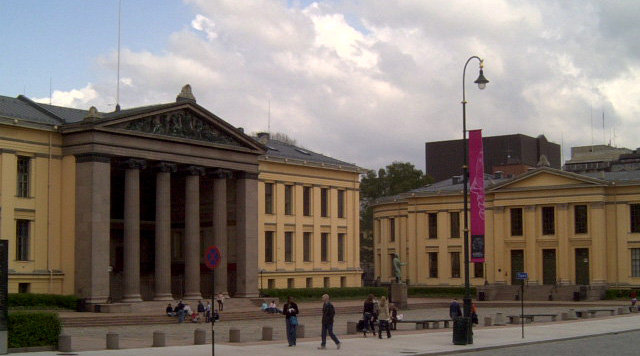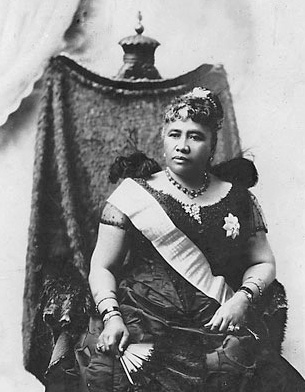|
Ο‰rnulf RΟΗd
Ο‰rnulf RΟΗd (23 October 1891 βÄ™ 1969) was a Norwegian barrister. He was born in TΟΗnsberg as a son of ship-owner Bernhard Adolf Johannessen RΟΗd (1833βÄ™1892) and Manny Gullichsen (1852βÄ™1933). He finished his secondary education in 1909, finished officer's training in 1912 and graduated with the cand.jur. degree from the Royal Frederick University in 1919. He was a deputy judge for one year before starting as a junior solicitor in Kristiania in 1920. From 1925 he was a barrister with access to working with Supreme Court cases. He started his own law firm in Oslo in 1933. In the military he was a Premier Lieutenant from 1912 and Captain from 1915 to 1934, then returned as Major in 1936 and Lieutenant Colonel from 1944. From 1945 to 1946 he served as the Judge Advocate General for the Norwegian Armed Forces The Norwegian Armed Forces () are the armed forces responsible for the defence of Norway. It consists of five branches, the Norwegian Army, the Royal Norwegian Navy, whic ... [...More Info...] [...Related Items...] OR: [Wikipedia] [Google] [Baidu] |
TΟΗnsberg
TΟΗnsberg (), historically Tunsberg, is a List of towns and cities in Norway, city in TΟΗnsberg Municipality in Vestfold county, Norway. It is located about south-southwest of the capital city of Oslo on the western coast of the Oslofjord near its mouth onto the Skagerrak. The city is the most populous metropolis in Vestfold county. TΟΗnsberg also serves as the administrative centre for Vestfold county and the seat of the County governor (Norway), County Governor of Vestfold og Telemark. TΟΗnsberg is generally regarded as the oldest city in Norway, founded in the 9th century. Snorri Sturluson mentions the town in Harald HΟΞrfagre's saga (written around 1220) before the battle at Hafrsfjord, which historians have traditionally dated to the year 872, therefore the town was in existence by 871 at the latest. This dating is again based on Are Frode's book, ΟçslendingabΟ≥k. Using this information, TΟΗnsberg celebrated its one-thousandth anniversary in 1871 and its 1100th anniversary ... [...More Info...] [...Related Items...] OR: [Wikipedia] [Google] [Baidu] |
Examen Artium
Examen artium was the name of the academic certification conferred in Denmark and Norway, qualifying the student for admission to university studies. Examen artium was originally introduced as the entrance exam of the University of Copenhagen in 1630. The University of Copenhagen was the only university of Denmark-Norway until The Royal Frederick University in Christiania was founded in 1811. In Norway, examen artium was formally discontinued after the 1982 class (but the term is still sometimes used informally to denote the diploma from today's " videregΟΞende skole"). Norway Typically after their tenth and final year of compulsory primary school education, students applied for admission to a three-year programs of studies, called "lines" at schools called ''gymnas'' within their counties. The curricula for the lines included a core of general studies topics, including Norwegian, mathematics, history, English, physical education, and one natural science subject. The curric ... [...More Info...] [...Related Items...] OR: [Wikipedia] [Google] [Baidu] |
University Of Oslo
The University of Oslo (; ) is a public university, public research university located in Oslo, Norway. It is the List of oldest universities in continuous operation#Europe, oldest university in Norway. Originally named the Royal Frederick University, the university was established in 1811 as the de facto Norwegian continuation of Denmark-Norway's common university, the University of Copenhagen, with which it shares many traditions. It was named for King Frederick VI of Denmark and Norway, and received its current name in 1939. The university was commonly nicknamed "The Royal Frederick's" (''Det Kgl. Frederiks'') before the name change, and informally also referred to simply as ''Universitetet'' (). The university was the only university in Norway until the University of Bergen was founded in 1946. It has approximately 27,700 students and employs around 6,000 people. Its faculties include (Lutheranism, Lutheran) theology (with the Lutheran Church of Norway having been Norway's ... [...More Info...] [...Related Items...] OR: [Wikipedia] [Google] [Baidu] |
Oslo
Oslo ( or ; ) is the capital and most populous city of Norway. It constitutes both a county and a municipality. The municipality of Oslo had a population of in 2022, while the city's greater urban area had a population of 1,064,235 in 2022, and the metropolitan area had an estimated population of in 2021. During the Viking Age, the area was part of Viken. Oslo was founded as a city at the end of the Viking Age in 1040 under the name Ο¹nslo, and established as a ''kaupstad'' or trading place in 1048 by Harald Hardrada. The city was elevated to a bishopric in 1070 and a capital under Haakon V of Norway around the year 1300. Personal unions with Denmark from 1397 to 1523 and again from 1536 to 1814 reduced its influence. After being destroyed by a fire in 1624, during the reign of King Christian IV, a new city was built closer to Akershus Fortress and named Christiania in honour of the king. It became a municipality ('' formannskapsdistrikt'') on 1 January 1838. ... [...More Info...] [...Related Items...] OR: [Wikipedia] [Google] [Baidu] |
Hvem Er Hvem?
''Hvem er hvem?'' () was a Norwegian book series, presenting facts about notable persons from Norway. The first edition was issued in 1912, and the 14th edition came in 1994. From 1938, the plan was to publish such a book every three years, but the Second World War made that impossible. At the time, such a book was published annually in Denmark and every two years in Sweden. In the 2008 edition, edited by Knut Olav ΟÖmΟΞs, one thousand persons were selected for presentation. About one third of the articles are longer, signed biographies, while the rest have a shorter, more encyclopedic format. The latest edition was edited by Knut Olav ΟÖmΟΞs and narrowed down to 1,000 people. This differs from the older ones in style in that the articles are in a more journalistic style with personal characteristics, in addition to the purely biographical year information. About 340 of the 1,000 biographies also have signed authors. Edition history *1912 (First edition, edited by Chr. Brinchm ... [...More Info...] [...Related Items...] OR: [Wikipedia] [Google] [Baidu] |
Norwegian Armed Forces
The Norwegian Armed Forces () are the armed forces responsible for the defence of Norway. It consists of five branches, the Norwegian Army, the Royal Norwegian Navy, which includes the Norwegian Coast Guard, Coast Guard, the Royal Norwegian Air Force, the Home Guard (Norway), Home Guard, and Norwegian Cyber Defence Force as well as several joint departments. The military force in peacetime is around 17,185 personnel including military and civilian staff, and around 70,000 in total with the current military personnel, conscripts and the Norwegian Home Guard in full mobilization. Among European NATO members, the military expenditure of US$7.2 billion is the highest per capita. History An organised military was first assembled in Norway in the 9th century and its early focus was naval warfare. The army was created in 1628 as part of DenmarkβÄ™Norway, followed by two centuries of regular wars. A Norwegian military was established Norway in 1814, in 1814, but the military did not s ... [...More Info...] [...Related Items...] OR: [Wikipedia] [Google] [Baidu] |
Lorentz Brinch
Lorentz Wilhelm Brinch (9 May 1910 βÄ™ 20 May 1953) was a Norwegian barrister, military officer, banker and politician for the Conservative Party. Pre-war life He was born in Kristiania as a son of barrister Christian Nicolay Brinch (1861βÄ™1946) and Anna Catharina Rolfsen (1870βÄ™1947). He was a brother of civil servant Christian Nicolay Keyser Brinch. In 1942 he married Anna Marta Ida Elisabeth HΟΗjer, daughter of the then-Swedish ambassador to Norway. He finished his secondary education in 1928, attended the Norwegian Military Academy and graduated from the academy's lower section in 1929 as a sergeant in the infantry. He became a second lieutenant in the reserves in 1930, and served with Infantry Regiment 15 and Infantry Regiment 1 that year. Brinch attended a course in military intelligence in 1931 and a medical officer course in 1933. Next to his regular military service, Brinch joined the voluntary military training organization '' Leidangen'', where he served as an ... [...More Info...] [...Related Items...] OR: [Wikipedia] [Google] [Baidu] |
1891 Births
Events January * January 1 ** A strike of 500 Hungarian steel workers occurs; 3,000 men are out of work as a consequence. **Germany takes formal possession of its new African territories. * January 4 – The Earl of Zetland issues a declaration regarding the famine in the western counties of Ireland. * January 5 **The Australian shearers' strike, that leads indirectly to the foundation of the Australian Labor Party, begins. **A fight between the United States and Lakotas breaks out near Pine Ridge agency. **A fight between railway strikers and police breaks out at Motherwell, Scotland. * January 7 ** General Miles' forces surround the Lakota in the Pine Ridge Reservation. ** The Inter-American Monetary Commission meets in Washington DC. * January 9 – The great shoe strike in Rochester, New York is called off. * January 10 – in France, the Irish Nationalist leaders hold a conference at Boulogne. The French government promptly takes loan. * Jan ... [...More Info...] [...Related Items...] OR: [Wikipedia] [Google] [Baidu] |
1969 Deaths
1969 (Roman numerals, MCMLXIX) was a common year starting on Wednesday of the Gregorian calendar, the 1969th year of the Common Era (CE) and ''Anno Domini'' (AD) designations, the 969th year of the 2nd millennium, the 69th year of the 20th century, and the 10th and last year of the 1960s decade. Events January * January 4 βÄ™ The Government of Spain hands over Ifni to Morocco. * January 5 βÄ™ Ariana Afghan Airlines Flight 701 crashes into a house on its approach to London's Gatwick Airport, killing 50 of the 62 people on board and two of the home's occupants. * January 14 βÄ™ USS Enterprise fire, An explosion aboard the aircraft carrier USS Enterprise (CVN-65), USS ''Enterprise'' near Hawaii kills 28 and injures 314. * January 16 βÄ™ First successful docking of two crewed spacecraft in orbit and the first transfer of crew from one space vehicle to another (by a space walk) between Soviet craft Soyuz 5 and Soyuz 4. * January 18 βÄ™ Failure of Soyuz 5's service module to separ ... [...More Info...] [...Related Items...] OR: [Wikipedia] [Google] [Baidu] |
People From TΟΗnsberg
The term "the people" refers to the public or common mass of people of a polity. As such it is a concept of human rights law, international law as well as constitutional law, particularly used for claims of popular sovereignty. In contrast, a people is any plurality of persons considered as a whole. Used in politics and law, the term "a people" refers to the collective or community of an ethnic group or nation. Concepts Legal Chapter One, Article One of the Charter of the United Nations states that "peoples" have the right to self-determination. Though the mere status as peoples and the right to self-determination, as for example in the case of Indigenous peoples (''peoples'', as in all groups of indigenous people, not merely all indigenous persons as in ''indigenous people''), does not automatically provide for independent sovereignty and therefore secession. Indeed, judge Ivor Jennings identified the inherent problems in the right of "peoples" to self-determination, as i ... [...More Info...] [...Related Items...] OR: [Wikipedia] [Google] [Baidu] |
University Of Oslo Alumni
A university () is an institution of tertiary education and research which awards academic degrees in several academic disciplines. ''University'' is derived from the Latin phrase , which roughly means "community of teachers and scholars". Universities typically offer both undergraduate and postgraduate programs. The first universities in Europe were established by Catholic monks. The University of Bologna (), Italy, which was founded in 1088, is the first university in the sense of: *being a high degree-awarding institute. *using the word (which was coined at its foundation). *having independence from the ecclesiastic schools and issuing secular as well as non-secular degrees (with teaching conducted by both clergy and non-clergy): grammar, rhetoric, logic, theology, canon law and notarial law.Hunt Janin: "The university in medieval life, 1179βÄ™1499", McFarland, 2008, , p. 55f.de Ridder-Symoens, Hilde''A History of the University in Europe: Volume 1, Universities in the Mi ... [...More Info...] [...Related Items...] OR: [Wikipedia] [Google] [Baidu] |





